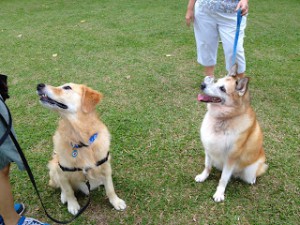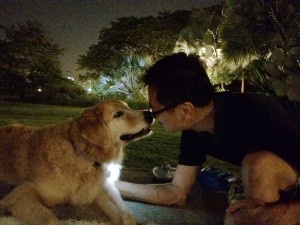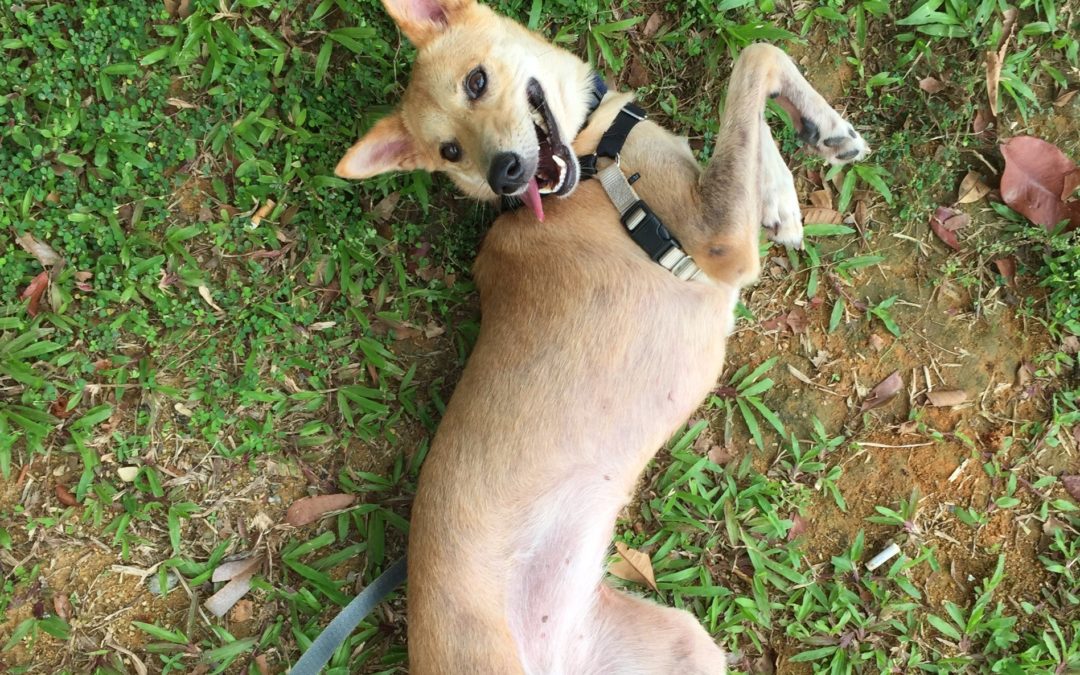Chief Cheery Officer (CCO) Kiyo’s approved training tip!

What is Positive Reinforcement Training:
Motivating a dog to make good choices, and rewarding her when she does. The reward provides feedback to your dog that you like what she just did. It thus reinforces the behaviour that we want, and the dog is more likely to repeat that same desired behaviour in another similar situation. With consistent practice, the dog becomes more reliable and fluent in making the desired choice.
Take for example, the case of a dog that’s reactive to another dog. We train the reactive dog to look at his owner when he sees another dog, instead of barking and lunging at the other dog. Whenever he does so voluntarily, he gets rewarded with a treat. Eventually, the dog learns and makes the conscious choice to check back with the owner whenever another dog is around. With positive reinforcement, the dog learns the skill of coping with a potentially stressful situation and is able to make a safe choice instead of reacting negatively.

Sugar (R, in the photo) is reactive to dogs. By using positive reinforcement and a carefully orchestrated process of counter-conditioning and desensitization where the pace of learning was set by Sugar, she was able to meet and interact with Kiyo calmly.
What Positive Reinforcement Is NOT:
In the same situation of a dog that’s reactive to another dog, it is NOT positive reinforcement when we force the reactive dog into a sit or down position whenever another dog is coming near. It is also NOT positive reinforcement when we use a head collar to turn the dog’s head away from the other dog, or jerk its leash and run away in the opposite direction.
One should not repeatedly expose the dog to such a situation, and then deliver a treat when the dog becomes too exhausted to be reactive towards the other dog. This form of training is an aversive method, using punishment and flooding, with treats thrown in as a ‘disguise’ for positive reinforcement. Aversive training is often an inappropriate method for dogs that are fearful and/or aggressive, and may even escalate the reactivity further. I have seen too many cases of this happening, not to sound an early warning as much as I can.

Why does it matter?
Just as it’s important to choose the appropriate school for a special needs child, it matters to your dog how you educate him to fit in with your family and lifestyle. Find out what your dog likes and use these motivators to teach him what you would like him to do. Be pre-emptive rather than reactive in nurturing your dog’s manners. By reading your dog’s communication signals accurately and learning together to establish an effective way to work as a team, both you and your dog will be much happier in the long term.
For more information about fear free and force-free training, check out our Puppy Brains and Family Dog Foundation Programmes.

